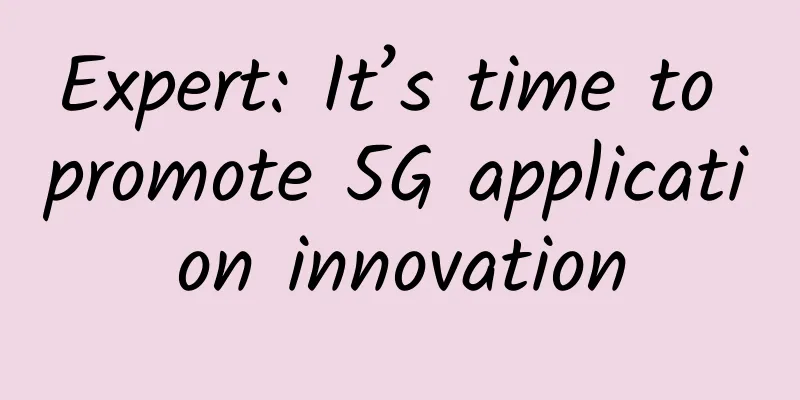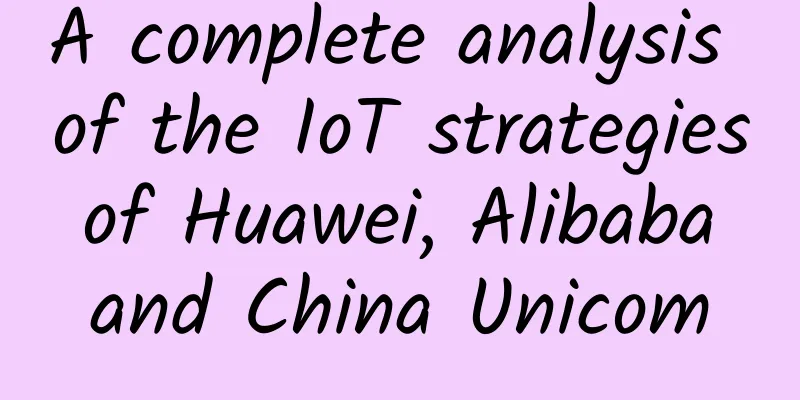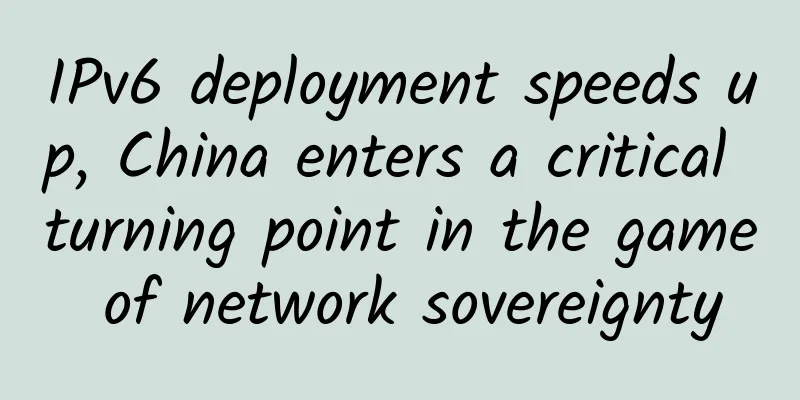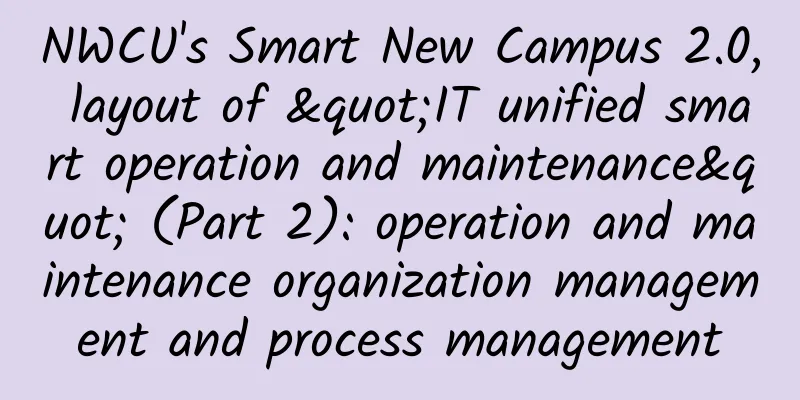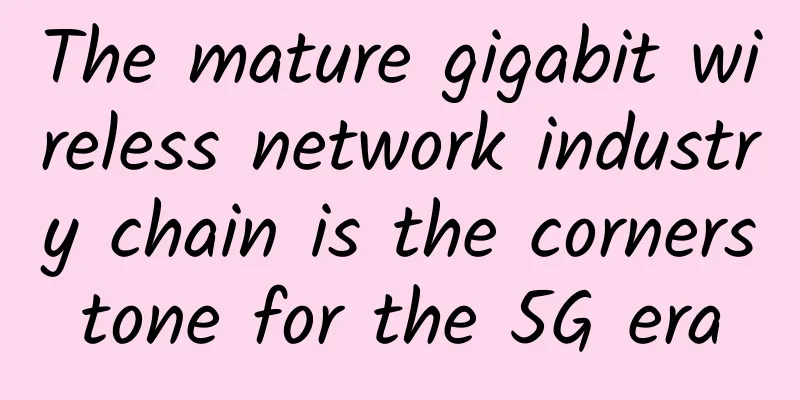5G+IoT, why will it usher in a completely different era of “operator of everything”?
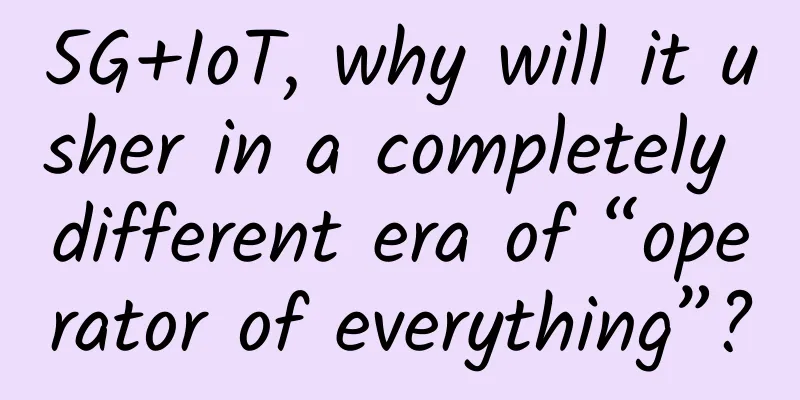
|
In the previous article "Entering the Billion-level Era, Two Business Models for IoT Enterprises to Successfully Break Through", I mentioned that the core competition and bottleneck of the current IoT has shifted from technical solutions to application competition and business models. Whether it is an IoT product application provider, an IoT data analysis service provider, or an IoT connection operator, they all need to pay attention to product experience and continuous operation.
That is to say, in the future IoT market, the role of "operator of everything" will become increasingly prominent and occupy a considerable value. Focusing on scenarios, "operating everything" and making profits from it will be an important business model. 5G is the key enabling technology for the operation of everything Why is the era of the operator of everything coming to fruition? From the perspective of industrial infrastructure upgrading, new opportunities will gradually emerge when the underlying technology develops to a certain stage. The "technological fuse" that triggers this change is 5G. Have you noticed that there are latest news about 5G almost every day? For example, recently, according to foreign media reports, Germany has decided to allocate the entire C-band to 5G, that is, the 3.4 GHz-3.8GHz spectrum. Automakers such as BMW, Daimler and Volkswagen have expressed their interest in building and operating local 5G networks to the German Spectrum Management Agency BNA. For the sake of security and controllability, some large industrial enterprises are also exploring the layout of 5G private networks, replacing and reconstructing wired industrial Ethernet in factories with ultra-low latency 5G NR links. Institutions such as the German Artificial Intelligence Research Center DFKI, SKF, and Ericsson have tried the industrial application of 5G, and have achieved good results in the verification stage. If we say that mobile communications previously mainly solved communication problems between people, with the advent of 5G, most of the attention of operators and their upstream and downstream has been attracted to the Internet of Everything, and it is expected that hundreds of billions of devices will be connected to the 5G network. Major operators have already started to lay out 5G infrastructure. According to predictions from Ericsson, GSMA and other institutions, self-driving cars, drones, virtual reality, manufacturing... are just the beginning of 5G applications. It will drive the explosion of smart devices and completely change our lives. You must be familiar with the technical characteristics and application advantages of 5G networks: not only will it greatly improve data rates, but it will also greatly improve latency and connection quality. Driven by 3GPP, NB-IoT/eMTC and its evolution technologies have been incorporated into the 5G family to ensure the smooth upgrade of NB-IoT/eMTC to future 5G networks. In the industrial field, 5G is actively integrating with time-sensitive networks (TSNs) to meet the needs of ultra-low latency, precise real-time performance, and high reliability at industrial sites. It is predicted that China will have 430 million 5G connections by 2025, accounting for one-third of the global total. The rapid growth of traffic has greatly triggered the large-scale explosion of data applications, which has opened up more opportunities for applications such as the Internet of Things, artificial intelligence, and business intelligence that rely on big data resources for intelligent decision-making. In the previous article, I mentioned that IoT application and service companies can be roughly divided into three types: IoT product application providers, IoT data analysis service providers, and IoT connection operators. These companies may be the prototypes of "everything operator". What is the Everything Operator? When an IoT company no longer just pursues selling products to users, but continuously provides various additional services on the original basis and constantly generates new service content and revenue methods, it will have the business foundation to become an "operator of everything". "Everything Operator" may still be a new term to you, but in fact, their operation logic has spread across industries and consumer markets such as smart connected cars, smart cities, industrial sites, smart logistics, and smart buildings. This new type of "Everything Operator" relies on the adoption of IoT technology to transform the original industry on the one hand, and on the other hand, it takes advantage of the extra dividends of the IoT era to build a new industrial ecosystem around it and create an innovative service network through edge computing and intelligent analysis capabilities. Based on the differentiated end-to-end network architecture and infrastructure resource advantages, all-in-one operators can provide lease services to enterprises or individual customers, including acceptance, activation, billing, charging, operation and maintenance services. They can also mine the commercial value of the data collected by the Internet of Things to optimize production, remote emergency or resource allocation, and maximize the value of various infrastructure and technical capabilities such as "data, network, and cloud". The foundation of all operations lies in the change of thinking The biggest difficulty and value point of the Internet of Things lies not in the technical solution but in the business model. The formation of a business model is not limited to the accumulation in the early stage, but more importantly, it depends on the change of thinking. In the 5G era, the underlying infrastructure will be further opened up, providing convenience for free combination and arrangement, achieving reasonable arrangement of resources and flexible call of capabilities. Autonomously arranged resources, freely callable capabilities, and quality-guaranteed sliced private networks, these basic technical improvements are combined together to achieve "network resource capabilityization" and decouple and transform the underlying communication technology. From then on, upper-level application developers are no longer constrained by the professional and boundary constraints of communication networks. Starting from demand, they can use the underlying resources for their own benefit and achieve a win-win situation.
For 5G, the most important thing is to find commercial value, especially the path of growth and monetization, so that operators and all sectors of the industry can work together to develop 5G. One of the most important points is cost. On the one hand, it is the cost for telecom operators to realize network resource capabilities. Communication equipment manufacturers conduct research and development based on communication standards, which has a long cycle and high change costs. There are also stability requirements. Various barriers make it impossible for them to advance their research and development in an iterative trial-and-error manner like Internet companies. If the cycle of combining communication resources into communication capabilities is long, the cost is high, and the operation is complex, then even functions that can be realized in theory will be difficult to promote on a large scale, let alone commercial realization. On the other hand, there is the cost of deploying end-to-end 5G equipment and services in various industries. The cost of hardware such as chips, storage, and sensors is becoming cheaper and cheaper following the development of Moore's Law, but the installation, debugging, and operation and maintenance costs of various equipment will not continue to decline according to the rules of Moore's Law. At present, the deployment cost of many devices has exceeded the hardware itself. Even if it is much cheaper to transform existing equipment than to replace it with a new one, the installation workload and cost are also factors that must be considered. The focus of the operation of everything is not "connection" but "operation". The experience and lessons of NB-IoT may provide some reference for the development of operators of everything. In the article "NB-IoT, the backbone of the future Internet of Things, or a hopeless case?", the author pointed out sharply that gas meters and water meters are the main force of NB-IoT shipments, and other applications have more or less inherent deficiencies. For example, smoke detectors lack strong policy support, manhole cover monitors are not cost-effective, the renovation funds of smart trash cans are a big problem, no one pays for tree and green monitoring, and the user experience of electric vehicle GPS locators is poor. Most NB-IoT projects are driven by government bidding or government subsidies. This approach is very suitable for guiding the early stages of industrial development, but government projects cannot support an industry. In addition to social benefits, economic benefits must also be considered. Creating sustainable cash returns by meeting real needs is the basis for the healthy development of the industry. Therefore, when using NB-IoT to connect various devices, the operational value of the device itself must be considered. When Internet companies provide user services, they still distinguish between high-net-worth individuals and ordinary people, frequent travelers and first-time users. IoT companies should make reasonable designs for the operational priorities of all things based on the commercial value created after the devices are connected to the network. For example, based on the NB-IoT communication technology, it is possible to draw a cycling heat map based on the usage data of shared bicycles, help the government solve the problem of the last mile of citizens' travel, assist the transportation department in predicting congested roads, or help supermarkets choose store locations. The number of connections may not be the largest, but the operational value is significantly higher than street lights and manhole covers. Therefore, when IoT operators are making their layout, they should not only pursue the number of connections, but also pay more attention to the quality and value of operations. Will NB-IoT be a pioneer or a martyr in the operation of everything? From the perspective of continuous evolution, NB-IoT is still in its early stages of development and this question remains unanswered. Whether 5G will fundamentally change cellular networks is not about what to do, but how to do it. Looking back and reviewing the development path of NB-IoT can at least provide some reference for the operation of everything and help it avoid some detours. From value chain to value network In addition to the shift in thinking from pursuing "connection" to evaluating "value", all-in-one operators should also realize that the entire value system is undergoing reconstruction, evolving from a one-way "value chain" to a multi-dimensional and comprehensive "value network." Why will the value system be reshuffled and reconstructed on a large scale in the era of all-inclusive operators? In previous articles, I mentioned the importance of "business flow". Some IoT companies believe that they are at the upstream of the industry chain and are far away from the end users, so the pros and cons of business flow are hanging high. If they still hold this view in the future, even if they can eventually defeat all opponents, they are likely to lose to the times. Ning Yu, chief strategic planning expert at Huawei Software, once mentioned a book he read many years ago, titled "Open Growth: Big Business Trends". The book contains many controversial viewpoints. As time goes by, many topics have answers, and facts have ended the discussion. One of the viewpoints: the big business trend is from value chain to value network, which is gradually being confirmed. The traditional value chain is a chain of links, with clear division of labor and technical standards between upstream and downstream industries, and business models and partnerships that have undergone long-term adjustments and become stable. However, the success of mobile Internet and the development of the Internet of Things are driving practitioners to break with tradition and want to be "user-centric". The closer to users (and business flows) the better, and the shorter the industrial chain the better. In addition, the continuous breakthroughs in technology have created conditions for this subversive vision. Each link in the industrial chain is expected to become a leader in integrating others, so that they can formulate technical standards that are beneficial to themselves around the end customers. This competition will disrupt the original industrial order, and the final result may be manifested in two ways: rebuilding the industrial chain in production and manufacturing; and networking in business models. Not only can a certain link skip the middle link and even establish a connection with the end user, but it can also provide products for other traditional industrial chains. This kind of industrial networking has brought greater imagination and development space for IoT applications in various industries, and also provided conditions for the innovation of cooperation methods. In the B2B world, the future may not be just a simple buyer-seller relationship. Each unit of the value network may find new business opportunities and create new sparks in the cross-platform collision. Let’s take the automotive industry chain as an example. In the traditional automotive value chain, value is mainly tied to the vehicle and controlled by the original equipment manufacturer (OEM). Additional value is contained in ancillary products and services, including suppliers, dealer networks, tire and car maintenance service providers, gas stations, auto parts stores, insurance companies, etc. Value creation is mainly targeted at product differentiation and support services, including upgrade options such as leather interior and sunshades, as well as safety levels and brand exclusivity. In the new car/mobility ecosystem, value will be tied to the utility that consumers gain from the entire mobility experience and related services, rather than from the inherent value of the car itself as a means of transportation. The creation of value reflects the quality of the entire customer experience. The better the customer experience, the more value is created. Support services (such as satellite radio SiriusXM), remote services (such as OnStar), or high-speed connectivity improve the entertainment experience of the journey and provide greater convenience to consumers. Because the experience creates greater value, consumers may be more willing to pay. Value may also shift from automakers and dealers to mobile ecosystem orchestrators. All kinds of manufacturers have the opportunity to participate in a branch role of "operator of everything". We have long since gotten used to the bombardment of new technologies and concepts. We hear a lot of discussions about disruption, but what is really possible and will eventually happen is the best of the best. Instead of talking about disruption, we should think about gradual progress. The future will be very different from the past. We will either constantly redefine ourselves or be constantly redefined by others. For innovative IoT companies or companies trying to embrace IoT, it is time to accept the "barbarians" at the door with an open attitude, keep in close contact with new ecosystems and partners, and think about how to operate everything in the future. This article was inspired by a speech by Ning Yu, Chief Strategic Planning Expert at Huawei Software, titled “The Fragmented Internet of Things Calls for a More Open Ecosystem”. I would like to express my sincere gratitude to him. |
<<: Why is your internet speed still so slow after using CDN? Here are 4 reasons!
>>: Huawei and Longgang join hands to build an intelligent city and promote digital China
Recommend
Core technologies for building 5G networks: the differences and connections between SDN and NFV
We often hear network operators and equipment ven...
Xiao Yaqing, Minister of Industry and Information Technology: Promote the deep integration of 5G, Internet, big data, artificial intelligence and manufacturing
[[432534]] On November 1, the World Advanced Manu...
[6.18] V5.NET 20% off monthly payment for all independent servers, 30% off for specific models in Tsuen Wan, Hong Kong
V5.NET has launched this year's 618 promotion...
Gigabit broadband: speed for speed’s sake?
At this year's Broadband World Forum (BBWF 20...
What is coming will come. Taiwan may shut down 3G this year.
According to Taiwanese media reports, Chunghwa Te...
[Black Friday] HostKvm Hong Kong Signature VPS is permanently 40% off, top up $50 and get $5 free
HostKvm has launched a November and Black Friday ...
CUBECLOUD VPS 12% off: Hong Kong CN2 GIA monthly payment starts from 69 yuan, Los Angeles CN2 GIA line monthly payment starts from 60 yuan/month
CUBECLOUD (Magic Cube Cloud) has sent a promotion...
Considerations for designing the integrated cabling system in IDC computer rooms
IDC is the abbreviation of Internet Data Center. ...
Will NB-IoT be eliminated? What is the value of connectivity?
Just as Verizon and AT&T are commercializing ...
How to set up a new router?
[[426343]] 1. Router startup initial sequence Whe...
Deny 5G and believe in Starlink? IQ is a good thing
Not long ago, a foreign artist "made" a...
Krypt September: Cloud Server $120/year, 2vCPU/2GB/60GB SSD/3TB, Support Windows/Linux, Los Angeles/San Jose
Krypt has released the September discount informa...
Working principles of physical layer/data link layer/network layer
[[279942]] Physical Layer Physical layer equipmen...
Wi-Fi 5 is being phased out, while Wi-Fi 6 is experiencing an explosion: its share is growing
[[388418]] Today, IDC released the "China WL...
Is the future of the new WIFI standard 802.11ad reliable?
Now there is a new WIFI standard that can increas...
